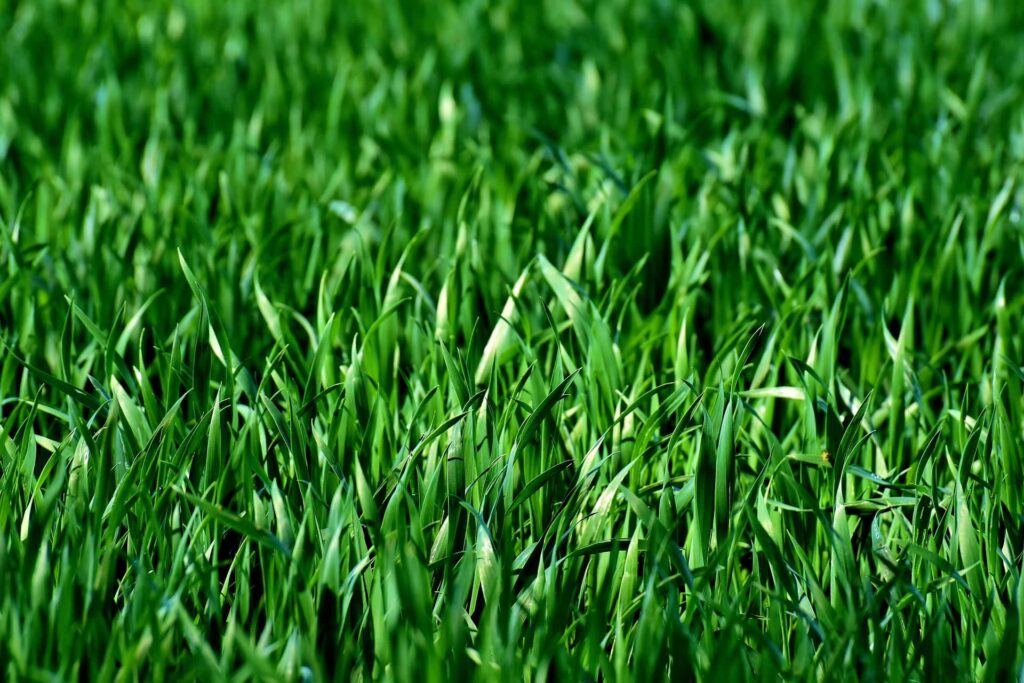Is your lawn looking a bit under the weather? Don’t worry – you’re not alone. Many homeowners struggle with keeping their grass lush and vibrant. But here’s the good news: with a little know-how, you can become an expert at assessing your lawn’s health and taking action to keep it thriving. Let’s dive into the world of lawn care basics and uncover the secrets to a picture-perfect yard.
Why Lawn Health Matters
A healthy lawn isn’t just about curb appeal. It’s a living ecosystem that contributes to the environment in numerous ways. A thriving lawn absorbs carbon dioxide, releases oxygen, and helps cool the air around your home. It also prevents soil erosion and filters rainwater, reducing runoff and pollution.
But how do you know if your lawn is healthy? Let’s explore the key indicators and assessment techniques that’ll help you become a lawn health detective.
Key Indicators of a Healthy Lawn

Before we dive into the nitty-gritty of lawn assessment, let’s look at what makes a lawn healthy. Here are the telltale signs:
- Vibrant green color: A healthy lawn boasts a rich, uniform green hue.
- Thickness and uniformity: Look for dense growth without bare patches.
- Minimal weed presence: A few weeds are normal, but they shouldn’t dominate.
- Absence of pests and diseases: Healthy lawns resist pests and fungal infections.
- Proper grass height: Grass should be maintained at the ideal height for its species.
- Lack of moss or fungal growth: These indicate underlying problems with moisture or nutrition.
If your lawn ticks all these boxes, congratulations! You’re on the right track. But let’s dig deeper into how you can assess these factors more thoroughly.
Visual Inspection: Your First Step in Lawn Health Assessment
Your eyes are your best tools for initial lawn health assessment. Here’s what to look for:
Color Analysis: Decoding Your Grass’s Hue
The color of your grass can tell you a lot about its health. Here’s a quick guide:
| Color | What it Means |
|---|---|
| Deep green | Healthy and well-nourished |
| Yellow or brown patches | Potential drought stress or nutrient deficiency |
| Bluish-gray tint | Water stress |
| Reddish-brown | Possible fungal disease |
Density Evaluation: Spotting Thinning Areas and Bare Patches
Walk across your lawn and pay attention to how it feels underfoot. A healthy lawn should feel slightly springy and dense. If you notice areas where you can see soil between grass blades, that’s a sign of thinning.
Weed Identification: Recognizing Unwanted Plant Invaders
While a few weeds are normal, an abundance of them indicates your lawn isn’t healthy enough to outcompete these invaders. Common lawn weeds include dandelions, crabgrass, and clover. If you’re seeing more weeds than grass, it’s time to take action.
Soil Health: The Foundation of a Flourishing Lawn

Your lawn’s health starts from the ground up. Healthy soil provides the nutrients, water, and air that grass roots need to thrive. When doing any sort of soil testing, be sure to follow all necessary lawn care safety tips. Here’s how to assess your soil:
- Conduct a soil pH test: Grass prefers slightly acidic soil with a pH between 6.0 and 7.0. You can buy a home testing kit or send a sample to a lab for more detailed results.
- Evaluate soil compaction: Compacted soil restricts root growth and water penetration. Try pushing a screwdriver into the soil. If it’s difficult, your soil might be compacted.
- Assess drainage effectiveness: After rain or watering, check for standing water. Good drainage is crucial for lawn health.
Understanding Your Turf: Grass Species Identification
Different grass species have different needs and characteristics. Knowing your grass type helps you tailor your care routine. Common cool-season grasses include Kentucky bluegrass and fescues, while warm-season varieties include Bermuda and Zoysia grass.
Pro tip: Take a sample of your grass to a local nursery or extension office for identification if you’re unsure.
Root System Analysis: Digging into Lawn Vitality
Healthy grass has deep, extensive roots. Here’s how to check:
- Use a shovel to carefully dig up a small section of turf (about 6 inches deep).
- Gently wash away the soil to expose the roots.
- Healthy roots should be at least 3-4 inches long, white or light tan, and have many fine branches.
Pest and Disease Detection: Safeguarding Your Lawn
Keep an eye out for these common lawn pests and diseases:
- Grubs: These C-shaped larvae feed on grass roots. Look for brown patches that peel up easily.
- Chinch bugs: These tiny insects cause yellow or brown patches in sunny areas.
- Dollar spot: A fungal disease that creates small, circular dead spots about the size of a silver dollar.
If you suspect a pest or disease problem, consider consulting a professional for accurate diagnosis and treatment.
Moisture Management: Balancing Hydration for Optimal Health
Proper watering is crucial for lawn health. Here’s how to assess moisture levels:
- Use a soil moisture meter or simply stick your finger into the soil up to the second knuckle.
- If it feels dry at that depth, it’s time to water.
- Water deeply and infrequently to encourage deep root growth.
Remember, overwatering can be just as harmful as underwatering, leading to shallow roots and fungal diseases.
Nutrient Deficiencies: Addressing Lawn Health Challenges
Your grass needs a balanced diet to thrive. Here are signs of common nutrient deficiencies:
- Nitrogen: Overall yellow or light green color
- Phosphorus: Purple or reddish color, especially in young grass
- Potassium: Yellow or brown leaf edges
A soil test can provide more detailed information about your lawn’s nutrient needs.
Professional Lawn Health Assessment: When to Seek Expert Help

While DIY assessment is great for routine checks, sometimes you need a pro. Consider calling in an expert if:
- You’re dealing with persistent problems despite your best efforts
- You’re planning major lawn renovations
- You want a comprehensive soil analysis and tailored care plan
DIY Lawn Health Check: Tools and Techniques
For your own lawn health assessments, consider investing in these tools:
- Soil pH test kit
- Soil probe or core sampler
- Magnifying glass for close-up inspections
- Digital camera to document changes over time
Seasonal Considerations in Lawn Health Evaluation
Your lawn’s needs change with the seasons. Here’s a quick seasonal guide:
- Spring: Look for winter damage and start your weed prevention strategy.
- Summer: Monitor for drought stress and pest activity.
- Fall: Assess overall lawn density and consider overseeding if needed.
- Winter: Check for snow mold in areas prone to prolonged snow cover.
The Soil Test: A Deep Dive into Lawn Health
A professional soil test provides invaluable information about your lawn’s growing conditions. Here’s what you need to know:
- Collect samples from several areas of your lawn, about 6 inches deep.
- Mix these samples together and send about a cup to a testing lab.
- Tests typically cost between $15-$50 and provide information on pH, nutrient levels, and organic matter content.
- Aim to test your soil every 3-5 years.
Four Pillars of a Healthy Lawn
Remember these four key factors for maintaining a healthy lawn:
- Quality soil composition: Rich in organic matter and properly balanced pH.
- Appropriate grass selection: Choose grass types suited to your climate and lawn use.
- Dense and uniform growth: Regular overseeding keeps your lawn thick and lush.
- Consistent maintenance practices: Regular mowing, watering, and fertilizing are crucial.
Addressing Common Lawn Health Issues

Here are quick fixes for common lawn problems:
- Dry lawn: Water deeply and infrequently, preferably in the early morning.
- Insect invasions: Identify the pest and use targeted treatments. Consider beneficial nematodes for grub control.
- Weed management: Pull weeds by hand or use selective herbicides. Prevent future weeds by maintaining a thick, healthy lawn.
- Soil compaction: Aerate your lawn annually, especially in high-traffic areas.
- Thinning lawn: Overseed in the fall for cool-season grasses or late spring for warm-season varieties.
Restoring an Unhealthy Lawn: Key Strategies
If your lawn needs some serious TLC, focus on these areas:
- Aeration: Use a core aerator to reduce soil compaction and improve air, water, and nutrient penetration.
- Proper watering: Water deeply (about 1 inch per week) but infrequently to encourage deep root growth.
- Effective fertilization: Use a balanced, slow-release fertilizer based on your soil test results.
Maintaining Long-Term Lawn Vitality
Consistency is key in lawn care. Develop a regular maintenance schedule that includes:
- Weekly mowing during the growing season
- Seasonal fertilization
- Annual aeration and overseeding
- Regular visual inspections
By staying on top of these tasks, you’ll catch and address problems early, keeping your lawn in top shape year-round.
Conclusion: Empowering Yourself for Ongoing Lawn Care Success
Assessing your lawn’s health doesn’t have to be a mystery. With these tools and techniques at your disposal, you’re well-equipped to become your lawn’s best advocate. Remember, a healthy lawn is a resilient lawn. By regularly checking in on your turf’s well-being and addressing issues promptly, you’ll be rewarded with a lush, vibrant lawn that’s the envy of the neighborhood.
So go ahead, step outside and give your lawn a health check-up. Your grass will thank you for it!


